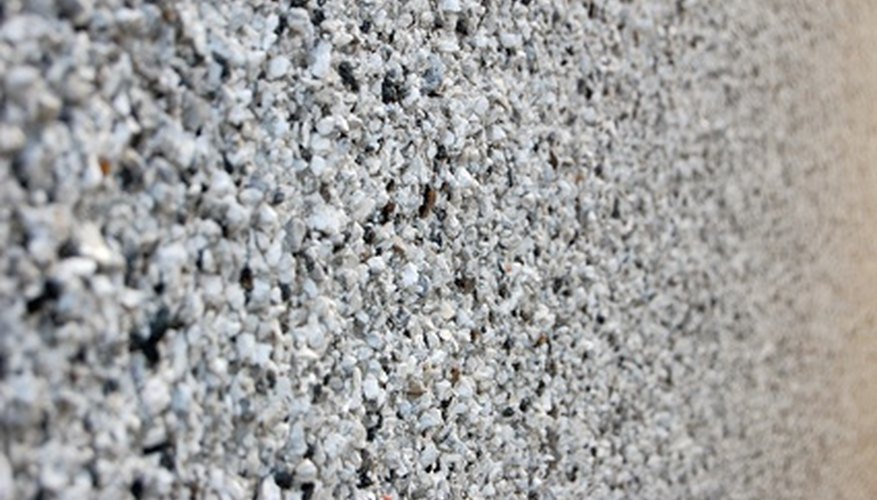Also known as pebbledash, roughcast is a textured plaster coating made with any or all of the following: lime, sand, gravel, shells or pebbles. Painting roughcast is a challenging endeavour because bits of aggregate tend to come loose during application. This can ruin painting tools and lead to a frustrating, tedious experience. Ease the painting process by committing yourself to proper preparation. Prime and paint the roughcast using suitable tools or coverage problems will arise.
Preparation
Scrape loose gravel, sand and pebbles from the roughcast surface using a wire brush. Be meticulous or these particles will come loose and ruin your nap roller cover.
Wash the roughcast using a pressure washer. Spray steadily and slowly, effectively eliminating any remaining loose bits.
Allow the roughcast to dry for 24 hours. Never prime or paint damp roughcast.
Apply stabilising primer to the roughcast using a roller. Be sure to use a thick, 3.7 cm (1 1/2 inch) nap cover. Roll only a 1.2 m (4 foot) wide area.
Stop and run your nylon brush vertically over the wet stabilising primer. This will smooth runs and drips and work the wet primer into crevices within the roughcast. Proceed until the roughcast is completely primed. Use your brush to dab stabilising primer into any skipped areas. Allow the stabilising primer to dry for two hours.
- Scrape loose gravel, sand and pebbles from the roughcast surface using a wire brush.
- Stop and run your nylon brush vertically over the wet stabilising primer.
Wash the stabilising primer from your roller and brush using running water.
Paint the roughcast just as you primed it.
TIP
Even properly prepared roughcast will shed particles during the application process. You may have to change your nap cover frequently.
WARNING
Don't use a polyester brush with roughcast; the bristles lose their form.
